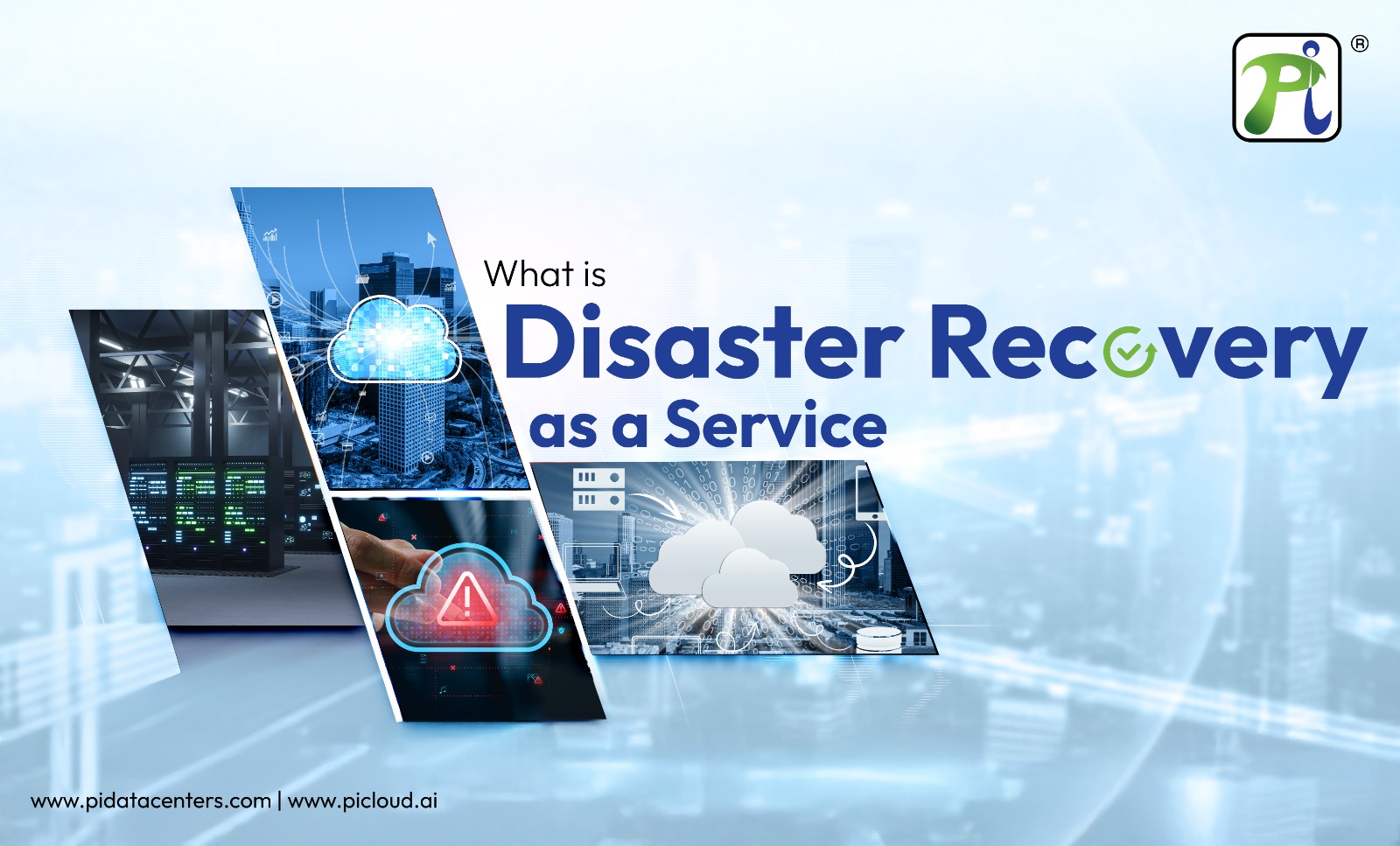We Will Get Back To You As Soon As Possible


Disaster recovery as a service (DRaaS) is a cloud computing service model that lets a business back up its data and IT infrastructure in a third-party cloud computing environment. It also provides all the DR orchestration through a SaaS solution so that the business can get back to using its IT infrastructure after a disaster. The as-a-service model means that the organization doesn't have to own all the resources or do all the work to recover from a disaster. Instead, it can rely on the service provider.
Planning for disaster recovery is very important for keeping a business running. In the last few years, there have been more and more disasters that could cause a lot of trouble for an IT organization:
• Hurricanes, floods, wildfires, and earthquakes are all examples of natural disasters.
• Breakdowns of equipment and power outages
• Attacks on computers
Things that happen out of the blue can mess up business:
• Natural disasters like hurricanes, floods, and earthquakes
• Technical problems include power outages and hardware failures.
• Cyberattacks can be ransomware or data breaches.
If you don't have a disaster recovery plan, these things can cause a lot of downtime, loss of money, and damage to your reputation. DRaaS makes sure that your business can get back up and running quickly.
Instead of being in the same place as the organization that owns the workload, DRaaS replicates and hosts servers in the facilities of a third-party vendor. In the event of a disaster that shuts down a customer's site, the disaster recovery plan is put into action at the facilities of the third-party vendor. Businesses can buy DRaaS plans in two ways: through a traditional subscription model or a pay-per-use model that lets them pay only when a disaster happens. As-a-service solutions come in different sizes and prices. Organizations should choose a DRaaS provider based on their own needs and budget.
DRaaS can help businesses save money by getting rid of the need to set up and keep up their own disaster recovery environment off-site. But businesses should look at and understand service level agreements. For example, what happens to recovery times if a big hurricane or earthquake affects both the provider and the customer? Different DRaaS providers have different rules about who gets help first in a big regional disaster and whether or not customers can do their own disaster recovery testing.
True DRaaS ensures a fully operational infrastructure on virtual servers, encompassing restructure on virtual servers that is always ready to go, including computing, storage, and networking. The organization can still use its applications; they just run them from the service provider's cloud or hybrid cloud environment instead of the physical servers that were damaged. This means that recovery time after a disaster can be much shorter, or even right away. Once the physical servers are fixed or replaced, the processing and data are moved back to them. When customers run their apps from the cloud instead of from an on-site server, they may notice more latency. However, the cost of downtime for the business can be very high, so it's important that the business can get back up and running.
A DRaaS provider can help businesses with all or part of their disaster recovery planning. There are a lot of different disaster recovery as a service providers to choose from. The three main types are:
• Managed DRaaS: With managed DRaaS, a third party handles all aspects of disaster recovery. If an organization chooses this option, they will need to stay in close touch with their DRaaS provider to make sure they are aware of all changes to infrastructure, applications, and services. This might be the best choice for you if you don't have the time or knowledge to handle your own disaster recovery.
• Assisted DRaaS: If you want to keep control of some parts of your disaster recovery plan or if you have unique or customized apps that would be hard for a third party to take over, assisted DRaaS might be a better choice. In this model, the service provider gives advice on how to improve disaster recovery procedures, but the customer oversees putting some or all the disaster recovery plan into action.

• Self-service DRaaS: In this case, the customer is in charge of planning, testing, and managing disaster recovery, and they host their own infrastructure backup on virtual machines in a remote location. To make sure that processing can fail over to the virtual servers right away in case of a disaster, careful planning and testing are needed. This choice is best for people who have disaster recovery experts on staff.
If there is a disaster, the service provider moves an organization's computer processing to its cloud infrastructure as part of disaster recovery as a service. This way, the business can keep going even if the original IT infrastructure is completely destroyed or taken hostage. A third-party provider only copies the data, not the ability to process it, in backup as a service. BaaS is usually cheaper than DRaaS because it only protects the data and not the infrastructure. BaaS can be a good way for businesses to keep records or data for legal reasons, but most businesses that use it will want to use it with another disaster recovery tool to make sure their business keeps running.
Every business should think about how to prepare for a disaster and get the help they need. A disaster recovery plan is necessary for business continuity, and more companies are turning to DRaaS.
A lot of companies with small IT teams just don't have the time to research, put into action, and fully test their disaster recovery plans. DRaaS takes the planning for a disaster out of the hands of the organization and puts it in the hands of experts in disaster recovery. It can also be a lot cheaper than having your own disaster recovery infrastructure in a remote location with an IT staff ready to help if something goes wrong. That expensive second infrastructure and staff never get used to it, if something bad doesn't happen. If you don't need their services, many DRaaS providers won't charge you. For a lot of businesses, DRaaS is a good way to solve a problem that keeps coming up.
A full disaster recovery plan should include specific emergency response needs, backup operations, and steps for getting back to normal. Disaster recovery (DR) strategies and plans are often part of a bigger business continuity strategy. This strategy includes backup plans to lessen the effects on more than just IT infrastructure and systems, so that all areas of the business can get back to normal as soon as possible.
When making plans for disaster recovery, you should think carefully about the following important metrics:
• Recovery time objective (RTO): The longest amount of time that systems and apps can be down without causing major damage to the business. Some apps can be offline for an hour, while others might need to get back online in minutes.
• Recovery point objective (RPO): The oldest data you need to get back to in order to start working again after a major event. RPO helps you figure out how often you need to back up your data.
When it comes to meeting on-premises needs for capacity, security, network infrastructure, bandwidth, support, and facilities, cloud disaster recovery can cut the costs of RTO and RPO by a lot. You can avoid most, if not all, of the things that make things more difficult with a highly managed service on Google Cloud. This will also help you save a lot of money on many business costs.
Meta Title: What is DRaaS? Cloud Disaster Recovery Made Simple
Meta Description: Learn how DRaaS helps businesses recover quickly from disasters, protect data and IT systems, and reduce downtime with cloud-based disaster recovery.
Questions? We're here to help.
©2025 Pi DATACENTERS® Pvt. Ltd. All rights reserved
